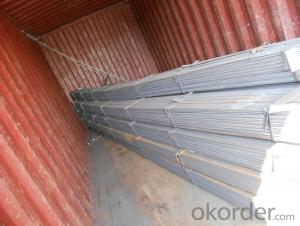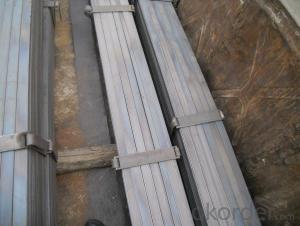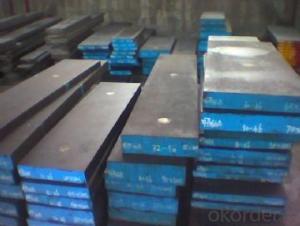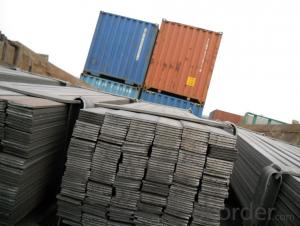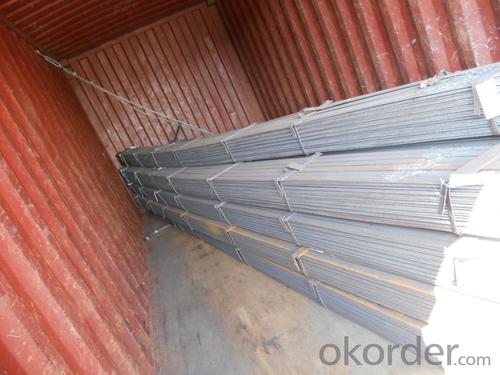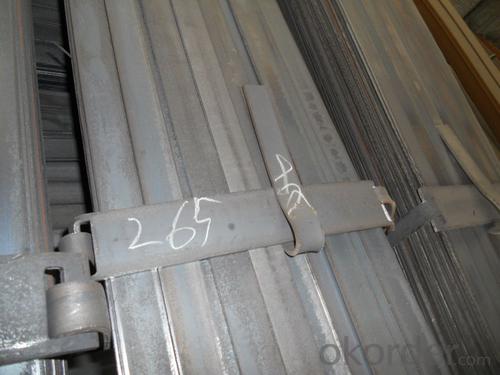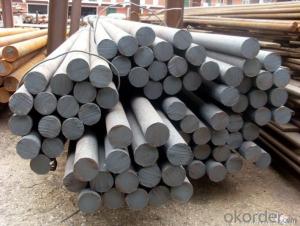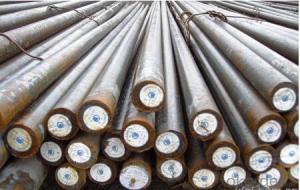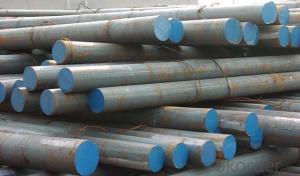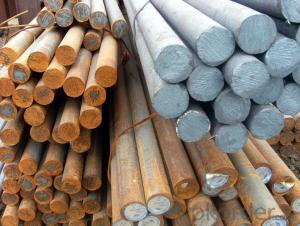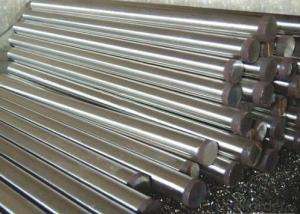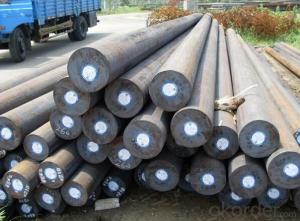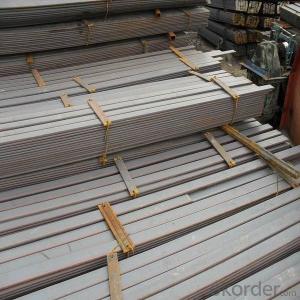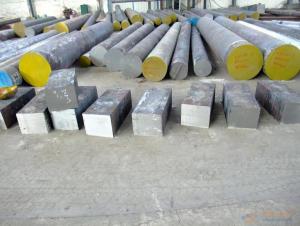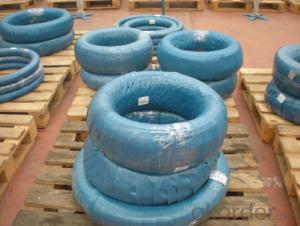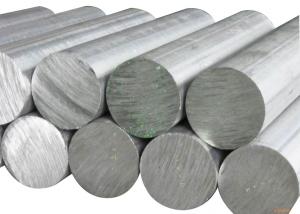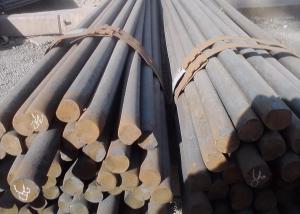Spring Steel Bar/billet/products JIS standard/Europe standard/ ASTM standard
- Loading Port:
- Shanghai
- Payment Terms:
- TT OR LC
- Min Order Qty:
- 20 m.t.
- Supply Capability:
- 1200 m.t./month
OKorder Service Pledge
OKorder Financial Service
You Might Also Like
Specifications
Spring steel flat bar
Garde: 60Si2Mn, 60Si2MnA, 55CrMnA,50CrVA
Standard GB,JIS,ASTM,DIN,AISI,BS
LF & VD forge;ISO&TUV appr
Materials
Q195,Q215,Q235B,Q345B,
S235JR/S235/S355JR/S355
SS440/SM400A/SM400B
Product Category
Metallurgy,Mineral &Energy
Technique
HOT ROLLED
Packing
1.Big OD:in bulk
2.Small OD:packed by steel strips
3.woven cloth with 7 slats
4.according to the requirements of customers
Usage
Mechanical&manufacture,Steel strcuture,
Shipbuilding,Bridging,Automobile chassis
Main market
Middle East,Africa, Asia and some Uropean country and America ,
Australia
Country of origin
China
Productivity
15000 Metric Tons pet Month
Remark
Payment terms :T/T ,L/C
Terms of trade :FOB ,CFR,CIF ,DDP,EXW
Minimum order : 10 tons
Lead time :on or before 3-15 working days .
- Q: What are the most common alloys used in special steel?
- The most common alloys used in special steel are chromium, nickel, molybdenum, and vanadium.
- Q: How does special steel contribute to improving product efficiency?
- Special steel contributes to improving product efficiency in several ways. Firstly, special steel typically has superior strength, durability, and corrosion resistance compared to regular steel. This allows manufacturers to design and produce products that can withstand higher loads, operate under harsh conditions, and have a longer lifespan. Secondly, special steel often has specific properties such as heat resistance or magnetic properties, which can be utilized in various industries like aerospace, automotive, and electronics. These properties enable the creation of more efficient and advanced products, such as high-performance engines, lightweight structures, or specialized electrical components. Additionally, special steel can be tailored to specific manufacturing processes, resulting in improved precision and productivity. Overall, the use of special steel enables the development of higher-quality, more reliable, and efficient products across multiple industries.
- Q: How is wear-resistant alloy steel used in the production of mining equipment?
- Wear-resistant alloy steel is extensively used in the production of mining equipment to enhance durability and strength. It is used to manufacture various components like buckets, blades, drill bits, and crusher liners that are subjected to abrasive materials and harsh mining conditions. The use of wear-resistant alloy steel ensures that these equipment parts can withstand the high impact and abrasion encountered during mining operations, thereby increasing their longevity and reducing maintenance costs.
- Q: How does high-speed steel perform in high-temperature cutting operations?
- High-speed steel performs exceptionally well in high-temperature cutting operations. It has excellent heat resistance, retaining its hardness and strength even at elevated temperatures. This makes it highly effective in applications that involve high cutting speeds and temperatures, ensuring prolonged tool life and improved cutting performance.
- Q: What are the different methods of testing the quality of special steel?
- To assess the quality of special steel, a range of testing methods are employed. These methods serve to verify that the steel meets the necessary standards and is suitable for its intended applications. One such method is chemical analysis, which involves scrutinizing the steel's composition to ensure it adheres to the required chemical specifications. This analysis helps determine the presence and quantity of crucial elements like carbon, manganese, chromium, nickel, and others, which play a significant role in achieving specific mechanical properties. Another testing approach is mechanical testing, which aims to evaluate the steel's strength, hardness, ductility, and other mechanical properties. Common tests include tensile testing, which measures the steel's ability to withstand tension, and hardness testing, which gauges its resistance to indentation or scratching. Non-destructive testing (NDT) methods are also utilized to assess steel quality without causing any damage. Techniques such as ultrasonic testing, magnetic particle testing, and liquid penetrant testing are employed to identify surface and internal defects, cracks, or discontinuities that could compromise the steel's integrity. Microscopic examination is employed to study the microstructure of special steel, allowing for the evaluation of grain size, inclusions, and other structural features. This analysis provides insights into the steel's properties and potential defects. Corrosion testing is carried out to ensure that special steel can withstand corrosive environments. Various tests, such as salt spray testing, electrochemical methods, and exposure to corrosive substances, are performed to assess the steel's resistance to corrosion and suitability for specific applications. To evaluate the steel's toughness and resistance to sudden loading, impact testing is conducted. This involves subjecting the steel to high-energy impacts to determine if it can withstand sudden shocks without fracturing. Heat treatment analysis is also essential for special steel, as it often undergoes heat treatment processes to enhance its properties. This analysis involves examining the microstructure and hardness of the steel after treatment to ensure it has achieved the desired properties. In conclusion, the combination of these testing methods guarantees that special steel meets the necessary quality standards, making it suitable for various applications in construction, automotive, aerospace, and industrial equipment.
- Q: What are the different medical grades of special steel?
- Medical steels are classified into different grades based on their unique properties and characteristics in the medical field. These grades are specifically tailored to meet the strict requirements of medical applications, including surgical instruments, implants, and medical devices. Some well-known medical grades of special steel include: 1. Stainless Steel: The most commonly used medical grade of special steel is stainless steel, renowned for its exceptional corrosion resistance and biocompatibility. It contains high levels of chromium and nickel, which provide corrosion resistance and make it suitable for implants and surgical instruments. 2. Titanium Alloys: Lightweight yet strong, titanium alloys are ideal for medical applications like orthopedic and dental implants, as well as cardiovascular devices. These alloys are highly biocompatible and exhibit excellent resistance to corrosion and fatigue, ensuring long-term durability. 3. Cobalt-Chromium Alloys: Cobalt-chromium alloys possess exceptional strength, wear resistance, and stability at high temperatures, making them suitable for implantable devices such as hip and knee replacements. They offer excellent biocompatibility and strike a good balance between strength and flexibility. 4. Nitinol: Nitinol, composed of nickel and titanium, is a shape memory alloy with unique properties like superelasticity and shape memory effect. Its excellent biocompatibility and ability to adapt to different physiological conditions make it commonly used in medical devices such as stents, orthodontic wires, and vascular closure devices. 5. High Carbon Stainless Steel: High carbon stainless steel is a specialized grade used in surgical instruments that require exceptional sharpness, hardness, and wear resistance. This grade allows for the production of extremely fine and precise cutting edges, making it suitable for delicate procedures. These are just a few examples of the medical grades of special steel utilized in the healthcare industry. Each grade offers specific advantages depending on the intended application, and their selection is crucial to ensure optimal performance, biocompatibility, and patient safety.
- Q: How does special steel contribute to the aerospace racing industry?
- Special steel plays a crucial role in the aerospace racing industry by offering superior strength, durability, and performance characteristics that are essential for the demanding conditions and requirements of high-speed racing. One of the primary contributions of special steel to the aerospace racing industry is its ability to withstand extreme temperatures and pressures. Special steel alloys, such as nickel-based superalloys, are specifically designed to maintain their mechanical properties under high temperatures, making them ideal for the intense heat generated during racing. These alloys exhibit excellent creep resistance, allowing the components to withstand prolonged exposure to elevated temperatures without deformation or failure. Moreover, special steel alloys possess exceptional strength-to-weight ratios, providing a competitive advantage in the aerospace racing industry. The high strength of these alloys allows for the design and construction of lighter and more efficient racing components, such as engine parts, landing gears, and structural elements. This reduces the overall weight of the aircraft, enhancing its performance and speed while maintaining structural integrity and safety. Additionally, special steel offers excellent corrosion resistance, which is vital in the aerospace racing industry. The harsh conditions experienced during racing, including exposure to moisture, chemicals, and atmospheric elements, can lead to corrosion and deterioration of critical components. Special steel alloys, such as stainless steel, are highly resistant to corrosion, ensuring the longevity and reliability of the racing aircraft. Furthermore, special steel's unique metallurgical properties, such as high fatigue and fracture resistance, contribute to the safety and reliability of the aerospace racing industry. The high fatigue strength of these alloys allows them to withstand repeated loading and unloading cycles without developing cracks or failures. This is crucial in high-speed racing, where components are subjected to significant stress and strain. Special steel's exceptional fracture toughness also ensures that any potential cracks or flaws do not propagate catastrophically, minimizing the risk of catastrophic failures during racing. In conclusion, special steel plays a pivotal role in the aerospace racing industry by offering superior strength, durability, and performance characteristics. Its ability to withstand extreme temperatures, provide excellent strength-to-weight ratios, resist corrosion, and exhibit high fatigue and fracture resistance makes it an indispensable material for the construction of racing aircraft components. The use of special steel in the aerospace racing industry ultimately enhances the performance, speed, safety, and reliability of racing aircraft, pushing the boundaries of aerospace technology and propelling the industry forward.
- Q: What are the applications of special steel in aerospace engineering?
- Special steels play a crucial role in aerospace engineering due to their unique properties and capabilities. These steels are specifically designed to meet the demanding requirements of the aerospace industry, where high strength, excellent corrosion resistance, and extreme temperature resistance are of utmost importance. Here are some key applications of special steel in aerospace engineering: 1. Aircraft engine components: Special steels, such as stainless steels, are used extensively in the manufacturing of aircraft engine components. These steels offer superior strength, corrosion resistance, and high-temperature resistance, making them ideal for critical parts like turbine blades, compressor discs, and shafts. 2. Landing gear systems: The landing gear of an aircraft is subjected to significant stress and impact during takeoff, landing, and taxiing. Special steels, known for their excellent strength, toughness, and fatigue resistance, are employed in the fabrication of landing gear components like struts, axles, and shock absorbers. 3. Structural components: Aerospace structures need to withstand dynamic loads, vibrations, and extreme environmental conditions. Special steels, such as high-strength low-alloy (HSLA) steels, are used in various structural components like wings, fuselage frames, and support structures. These steels offer exceptional strength-to-weight ratios, ensuring structural integrity while minimizing weight. 4. Fasteners: Special steel fasteners, such as bolts, screws, and rivets, are vital for joining different components in aerospace applications. These fasteners are typically made from high-strength steels, providing excellent tensile and shear strength, as well as corrosion resistance, to ensure secure and reliable connections. 5. Fuel system components: Special steels with high resistance to corrosion, such as stainless steels, are used in the construction of fuel system components like tanks, pipes, and valves. These steels prevent fuel leakage and maintain the integrity of the system, even when exposed to harsh environments. 6. Electrical connectors: Aerospace electrical systems require reliable and efficient electrical connectors. Special steels, often with high electrical conductivity and corrosion resistance, are used in manufacturing connectors, ensuring optimal performance and longevity. In summary, special steels find extensive use in aerospace engineering due to their exceptional properties. Whether it is for critical engine components, landing gear systems, structural applications, fasteners, fuel systems, or electrical connectors, these steels provide the necessary strength, corrosion resistance, and temperature stability required to ensure safe and efficient aircraft operation.
- Q: What are the properties of duplex stainless steel?
- Duplex stainless steel is a type of stainless steel that possesses a unique combination of properties. It is highly corrosion resistant, making it suitable for use in aggressive environments, such as those containing chlorides or acids. It also exhibits excellent strength and toughness, allowing it to withstand high pressures and temperatures. Additionally, duplex stainless steel has good weldability and formability, making it versatile for various fabrication processes. Its dual-phase microstructure provides a balance of ferrite and austenite, resulting in improved resistance to stress corrosion cracking and higher resistance to pitting and crevice corrosion compared to other types of stainless steel.
- Q: How does special steel perform in terms of wear resistance in abrasive environments?
- Special steel is renowned for its remarkable ability to resist wear in environments with abrasives. The unique combination of elements and the specific heat treatment methods employed during its production result in a greater level of hardness compared to regular steels. This enhanced hardness grants special steel exceptional resistance to wear caused by abrasive particles or surfaces. In environments where friction and contact with hard materials are prevalent, special steel demonstrates outstanding performance. It can endure the erosive effects of abrasive particles, such as sand, rocks, or metal fragments, without experiencing significant wear or damage. This durability positions special steel as the ideal choice for various applications, including mining equipment, cutting tools, industrial machinery, and automotive components. Furthermore, the wear resistance of special steel extends beyond its surface, permeating throughout its structure. Consequently, even if the steel's surface becomes scratched or abraded, the underlying material remains highly resistant to wear. This characteristic ensures that components made from special steel enjoy an extended lifespan, thereby reducing maintenance costs and downtime. Moreover, special steel retains its wear resistance even when subjected to high temperatures. This property proves particularly advantageous in abrasive environments where the heat generated by friction can accelerate wear. The ability of special steel to maintain its hardness and wear resistance at elevated temperatures guarantees its effectiveness in demanding applications such as high-speed machining or hot forging. Overall, special steel surpasses standard steels when it comes to wear resistance in abrasive environments. Its superior hardness, structural integrity, and temperature resistance make it an excellent choice for applications where durability and longevity are crucial.
Send your message to us
Spring Steel Bar/billet/products JIS standard/Europe standard/ ASTM standard
- Loading Port:
- Shanghai
- Payment Terms:
- TT OR LC
- Min Order Qty:
- 20 m.t.
- Supply Capability:
- 1200 m.t./month
OKorder Service Pledge
OKorder Financial Service
Similar products
Hot products
Hot Searches
Related keywords
